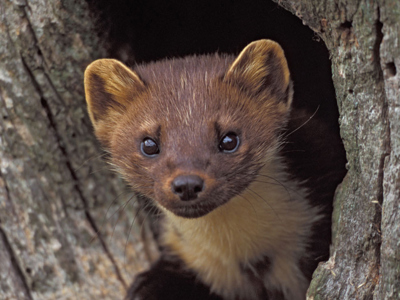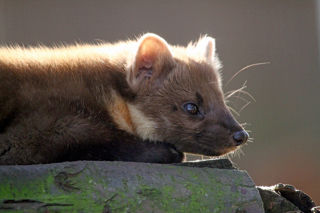
South East Pine Marten restoration project

Wildwood Trust and Kent Wildlife Trust, in collaboration with Sussex Wildlife Trust, are assessing the possibility of restoring pine martens to the South East of England.
The European pine marten (Martes martes) was considered functionally extinct in England due to extensive hunting and loss of habitat throughout the 19th century. Today, this rare species is mainly found in Scotland and Ireland, and has also been re-introduced into suitable areas in other parts of the UK.
We would like to see the restoration of pine martens back to the South East of England as they are part of Britain’s natural fauna and play important roles which contribute to a biodiverse environment by dispersing the seeds they eat as well as influencing small mammal populations through predation as part of their varied diet.

This project is in its early stages. We are currently determining whether the habitat in the south east is suitable for pine martens, and talking to a range of local people and stakeholders about how they feel about pine martens and their potential reintroduction, called ecological and social feasibility studies.
We have formed a stakeholder working group to enable discussions between a range of key organisations and community groups. This stakeholder working group will be a key component in determining the outcomes of the south east pine marten project.
For more information about the project, please contact
Suzanne Kynaston (suzanne@wildwoodtrust.org) or
Amy Fitzmaurice (amy.fitzmaurice@kentwildlife.org.uk),
who are jointly managing this project with the Project Committee.
Committee organisers
Wildwood Trust
Kent Wildlife Trust
Sussex Wildlife Trust
Forestry England
Ashdown Forest
Stakeholder Working Group organisations
Kent High Weald Countryside Partnership, WildGenes (Royal Zoological Society Scotland), Ashdown Forest, Sussex Mammal Group, Forestry England, High Weald AONB, East Sussex County Council, Kent Mammal Group, and more.
For more information about the project, please contact Suzanne Kynaston (suzanne@wildwoodtrust.org) or Amy Fitzmaurice (amy.fitzmaurice@kentwildlife.org.uk) who are jointly managing this project with the Project Committee.
